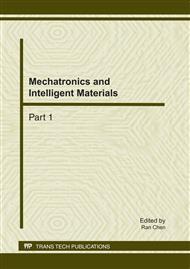p.1100
p.1105
p.1110
p.1115
p.1119
p.1124
p.1129
p.1133
p.1137
Multi-Factor Fuzzy Time Series Model Based on Stock Volatility for Forecasting Taiwan Stock Index
Abstract:
Fuzzy time series have in recent years drawn many scholars' attention due to their ability can handle the time series data with incomplete, imprecise and ambiguous pattern. However, most traditional time series models employed only single variable (stock index) in forecasting, yet ignored some factors that would also affect the stock volatility. Therefore, this paper proposes a novel forecasting model using multi-factor fuzzy time series model to forecast TAIEX (Taiwan Stock Exchange Capitalization Weighted Stock index). Multi-factor fuzzy time series model is composed of three main components: stock index, trading volume and interactions between two stock markets. In order to evaluate the performance of the proposed model, the transaction records of TAIEX (Taiwan Stock Exchange Capitalization Weighted Stock index) and NASDAQ(National Association of Securities Dealers Automated Quotations) from 2000/01/04 to 2003/12/31 are used as experimental dataset and the root mean square error (RMSE) as evaluation criterion. The results show that the proposed model outperforms the listing models in accuracy for forecasting Taiwan stock market.
Info:
Periodical:
Pages:
1119-1123
Citation:
Online since:
February 2011
Authors:
Keywords:
Price:
Сopyright:
© 2011 Trans Tech Publications Ltd. All Rights Reserved
Share:
Citation:


